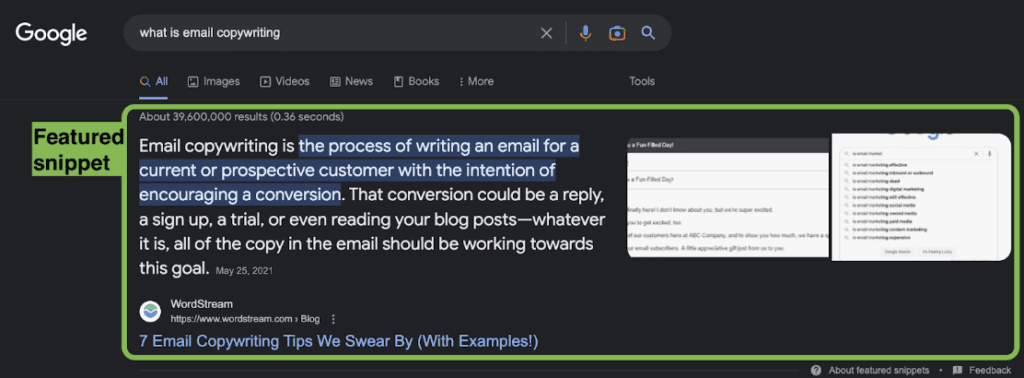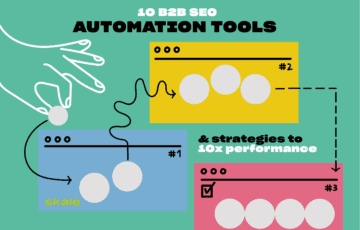
The Power of Partnership: 7 Benefits of Hiring a B2B SEO Agency
These benefits of hiring a B2B SEO agency illustrate why outsourcing your content can help you to drive new revenue for your business.


Level up your SEO strategy with Skale
See where Skale’s SEO experts can take your MRR. Get in touch, today
Contact UsAs tech advances and continues to get smarter, SEO strategies and tactics are rapidly adapting in order to keep up.
The only constant in SEO is change. Competing for the top organic search result spot is a non-stop, always-changing undertaking that requires a proactive approach. SEO trends can be tricky and your B2B marketing strategy needs to be in a constant state of flux to stay relevant.
Failure to stay on top of SEO trends can dramatically affect your outreach opportunities, rankings, lead intake, and ultimately your bottom-line revenue.
As complicated and overwhelming as SEO can sometimes be, the idea behind SEO remains consistent–to improve your presence in organic and relevant search results.
The 8 top SEO trends we’ll cover in this article are:
With over 2 billion monthly users on Youtube, video is quickly becoming the most consumed content format. B2B brands need to prioritize videos in their content strategy—preferably through YouTube—to increase search traffic and maximize potential exposure.
Focus on useful videos related to your target audience’s search goals, address specific customer questions, find broad match keywords, and target their long tail variants that are specific to your niche.
Arianna, the SEO manager at Skale, confirms video content is a key upcoming SEO trend. Arianna says “as Google shows more and more videos in the SERPs, there’s an opportunity for B2B marketers to showcase their products and services in a video format.”
Digestible video excerpts are just the start. As Google continues to incorporate more and more videos into search rankings and results, optimizing your videos is more essential than ever.
Tips to keep in mind when creating your video content:
Google is changing up what it shows on the first page of search engine results pages and it’s changing how it shows it.
Instead of basic website links, Google is diversifying the traditional search experience with new ways to answer search inquiries, making search marketing that much more complicated.
Results that include FAQs, video carousels, images, knowledge panels, and more are all competing for that coveted click share. To maximize performance, you need to take a creative look at the various options for first-page ranking factors across your search terms.

Structured data is the way that search engines understand how to organize and display your content.
Artificial Intelligence tools and apps are changing the content wiring game. It’s no longer necessary for every part of the SEO process to be handled by manual labor. As AI continues to grow and develop, it becomes more capable of understanding SEO tactics and learns how to take over mundane SEO tasks.
AI-powered SEO tools and apps–like AI Writer, Jasper AI, Grammarly, and Surfer–can support your team by generating SEO-friendly keyword guides, rankable content ideas, and even drafting different writing stages of the content-creating process.
These tools for B2B SEO can help your marketing team maximize their budget, save valuable time, and support your keyword research while hitting relevant content targets. It provides a valuable starting point for your teams to adapt, edit, and adjust to your specific needs.
Mobile-friendliness, now more than ever, is near the top of the list for search engine optimization.
Providing a consistent, user-friendly online experience should be your number one goal. It shouldn’t matter what kind of device people are using–the idea is for your audience to have a delightful digital experience. Keep visitors on your page longer and decrease your bounce rate with user-friendly priorities.
Google search engine algorithms look at the mobile version of pages first. Even though this update has been live since 2019, many B2B businesses still haven’t fully optimized for their mobile search users. In particular, smaller businesses should pay attention to their mobile usability to maintain relevance in today’s SEO world.
Prioritize mobile user testing and conversion rate optimization to take full advantage of your site traffic and boost your SEO performance.
Easy access to information is a top priority for searchers everywhere. Users want results, and they want them fast. However, with all of the information available, handling and recognizing misinformation can be tricky. Users–and search engines–want factual, accurate information they know they can trust.
E-E-A-T stands for experience, expertise, authority, and trust. Google uses these measures to sort through content according to their Search Quality Rater guidelines. While this idea was first introduced in 2019, it remains more important than ever today.
Information sources need to prove their credibility and that their information is reliable. Even though EAT is not always a ranking factor, it’s still important for B2B brands who want higher search engine rankings.
Every algorithm update by Google will always follow the EAT principle. Something that will stay true in SEO. This means the well-written, factual content written by proven experts in the niche will help you rank higher overall and weather any future algorithm modifications.
Take note that the core of SEO and higher rankings comes down to your content quality. So, always pay attention to the value you are providing in your content and then optimize for search after.

Measure the ROI of your SEO efforts
Practical methods for accurately measuring the ROI of your SEO strategy + free ROI tracker
Read SEO ROI articleGoogle’s new Passages Algorithm makes it easier for Google to rank long-form content that answers a question in content passages, taking into account the context of the topic at hand.
Google is already an expert in finding answers to common searches in content that is well-organized and directly related to the question asked. But, Google rolled out a way to attempt to actually find the specific answer to the user’s query even if it is buried deep down in a web page.
As Google points out: “By understanding passages in addition to the relevancy of the overall page, we can find that needle-in-a-haystack information you’re looking for. This technology will improve 7% of search queries across all languages as we roll it out globally.”
Keep your content coherent and make it passage-worthy by trying to create content that answers potential questions preemptively and from your audience’s point of view.
Voice search is a major player in the SEO strategy game, with 27% of the global online population using voice search on mobile.
Voice search technology is only getting stronger over time. Not only is it a great option for those who don’t feel like typing long search questions, but also for vision-impaired and limited-mobility users.
Now that smart speaker sales are on the rise and people are looking for new, hands-free ways to get answers, Google is evolving and paying more attention to the voice search game.
When typing out questions by hand, users tend to use shorter searches requiring fewer words and less time typing. However, when using voice search, people tend to speak out full questions and/or phrases.
For example, when typing out a question a user might type: “B2B SEO Trends in 2022″ versus when speaking, “Hey Google, what are the latest B2B SEO trends to look for in 2022?”—see what we did there?
To wrap up, as users approach searches from a conversational angle, it is essential to understand why and how they will begin their search in the first place. To take full advantage of voice search trends, you’ll need to optimize your written content for long-phrase voice queries that keep voice searches in mind.
MUM, the Multitask Unified Model, is a powerful update that blows past exact match content and analyzes context, abstractions, and feelings. Welcome to the future.
Google’s idea is that users will be able to perform one single search query to come up with keywords that give them the answers they are looking for. MUM analyses text, images, and videos, to solve complex search questions. It works with AI and natural language understanding and processing to answer complex search queries with multimodal data.
Skale’s Head of Tech & Content, Ben, believes that MUM will help provide users with logical next steps based on their search intent rather than generic SERPs–more personalization and guidance throughout the customer journey. He explains:
“Businesses will need to pivot to a full-funnel content strategy that covers every touchpoint in the user journey if they want to remain visible.
Rather than content for the sake of lead generation, content should be produced because it’s genuinely useful and strives to educate/inform across various formats (video, images, resources). This isn’t a new approach, but one that will be rewarded more than ever.”
This massive paradigm shift is just the beginning, opening up a whole new universe of SEO strategy. It’s time to create content that compliments blog posts. Enhance your existing content creation with audio and video to help keep internet traffic coming in and help users find more comprehensive information across other types of search engines beyond Google.
Staying relevant in the SEO world can be complicated at best and overwhelming at worst. Keeping up with the latest trends is important–not only to drive traffic and improve rankings– but also to avoid falling behind and falling off SERPs altogether.
While focusing on the trends in this article will boost your performance, it’s important to remember that B2B SEO is all about the long term. You’ll need to stay up to date and adaptable to all the algorithm changes that are sure to come in the future—stay on your toes, proactive and not reactive.
Optimizing content, building B2B backlinks, and driving website traffic can be a full-time job in itself. Add in maintaining best practices for B2B SEO trends and your plate can get full, fast. That’s where Skale comes in, as an expert B2B SEO agency that drives growth and conversions, we can take your SEO strategy to the next level.

Leave your SEO to the experts
Up your game. Apply for full SEO Management with the Skale team
Contact UsThe latest SEO trends and strategies help your website rank higher and help you stay ahead of your competitors. While keeping in mind that SEO is constantly evolving, the top trends to look for in 2024 are:
Youtube Videos
Featured Snippets and Structured Data
AI Content Tools and Apps
Optimized Content for Mobile-Users
EEAT-able Content
Understanding Passage Ranking
Voice Search
MUM–The Future is Here
B2B SEO focuses on keywords that users within businesses search for while at work. Technically, search engine optimization works the same in both B2B and B2C, however, in B2B, your optimized content helps your buyers know they are working with reliable and trustworthy vendors, and helps them stick around beyond their activation.
B2B SEO Trends to keep an eye out for in 2024 include the increasing use of video content, voice search, mobile-friendly websites, taking advantage of featured snippets, establishing trustworthy EEAT-able content, passage ranking, utilizing AI tools for optimization, and understanding Google’s MUM update.
Learn more about
B2B SEO

The Power of Partnership: 7 Benefits of Hiring a B2B SEO Agency
These benefits of hiring a B2B SEO agency illustrate why outsourcing your content can help you to drive new revenue for your business.

15 B2B Customer Acquisition Strategies that Increase Revenue
Want to find new customers who truly value your business? We’re here to help you out with a list of the top 15 B2B customer acquisition strategies.

10 B2B SEO Automation Tools & Strategies to 10x Performance in 2024
Save time with the right B2B SEO automation tools and strategies that are sure to bring your marketing to the next level–we've listed them here.